The Great Georgian Fruit Hunt
Sent to the Caucasus by the U.S. government, Malli Aradhya forages through orchards and markets in search of the perfect specimen
/https://tf-cmsv2-smithsonianmag-media.s3.amazonaws.com/filer/Figs-Diversity-631.jpg)
In the basins of the Mediterranean, the Black and the Caspian seas, they line the roadsides and populate the villages with the roguish persistence of weeds. They grow from Spanish castle walls, the bellies of Roman bridges, and the cobblestones of Muslim mosques. They grow in neatly arranged orchards, while volunteer seedlings sprout from cracks in the walls and splits in the sidewalks. Few people look twice at a fig tree in western Asia, where the trees are as common as people themselves. Late each summer, the branches sag with the weight of the crop, and on the sidewalks below, fallen figs accumulate in carpets of jammy, sticky paste. Locals eat what they can, both fresh and dried. Other figs are canned, some reduced into syrup, and a few infused into liquors. In markets at the height of the season, vendors let their apples sit but madly push their fresh figs at passersby, wishing to sell them even for a trifle before the delicate fruits spoil.
To botanists, this region of the Caucasus Mountains is known as a center of diversity for figs as well as mulberries, grapes, walnuts, apricots, pomegranates and almonds. All have grown here for millennia and through constant sexual reproduction have attained a tremendous range of genetic diversity, the variation easily seen on a walk through most villages or a visit to a large fruit bazaar.
It’s precisely this spectrum of colors, shapes, sizes and flavors that has drawn Malli Aradhya to the lowlands of the Republic of Georgia, a former Soviet nation banking the Black Sea and just south of the Greater Caucasus Mountains. He is a geneticist with the U. S. Department of Agriculture, and this is his fifth fruit-hunting expedition to the region in six summers. His objective: to collect tree crop varieties, transport them home as seeds and wood cuttings and—after the samples pass through federal and state inspection sites—propagate them at the USDA’s Wolfskill Experimental Orchards in Winters, California. This 70-acre varietal library, operated in conjunction with a test nursery at the University of California at Davis, is home to two “copies” each of several thousand plant accessions, many collected on excursions like this one. Aradhya himself has brought home some 500 of them on four trips to Azerbaijan and Kyrgyzstan.
Still, the collection, part of the National Clonal Germplasm Repository program, has its holes. Aradhya wants, for example, new rootstock varieties of pistachio, a blight-resistant walnut and figs sweet enough to sell yet sturdy enough to handle the bumpy rigors of post-harvest transportation—and all may exist in the orchards, villages and wild lands of Georgia.
The scientist is still jet-lagged by a 24-hour spell of travel when he visits a farmers market in the Gldani District of Tbilisi, the nation’s capital. Following behind two fruit geneticists from the Georgian Institute of Horticulture, Viticulture and Oenology, Aradhya eyes the heaps of apples, plums, nuts and figs with the discerning attention of, well, a fruit geneticist.
“There is tremendous variation here,” he says to his associates, David Maghradze and Zviadi Bobokashvili. Aradhya purchases several pounds of a small yellow peach and records the date, location of collection and name of accession on the small canvas sack.
“The fruit is worthless, but this could be good rootstock,” Aradhya tells me. The peaches'’ seeds, which may spend up to three years undergoing evaluation at a federal agency in Maryland, may eventually be sprouted in Davis and could someday supply plant breeders with the material to develop new rootstock varieties. He buys plums and almonds for the same reason: their seeds may contain genes for such traits such as pest, drought or heat resistance—all likely to be valuable assets in a coming century of climate change fallout.
We see a pyramidal stack of huge, green figs. Some are so ripe they have squashed, their raspberry red insides leaking through splits in their velvety skins. Aradhya doesn’t recognize this variety. He kneels to examine the fruits. They may not be suitable for long-distance shipping, a logistical factor problematic in the California fig industry, but they have one fetching component: Aradhya turns several over and shows me the eyeholes, or ostioles, on their undersides. “They’re tiny,” he points out. The openings are so small that ants could barely squeeze through. This means less pest infestation and less damage from mold that insects and wind may carry into to the ripening fruit.
“I want this fig,” he says to Maghradze. “Can you ask where the trees are?”
For the seeds alone will not do. Planted, they will produce trees similar but not identical to their two parent trees. What Aradhya wants are clones, and that means wood. Maghradze speaks with the vendor, but the man is just a city trader; he doesn’t know who grew the fruit.
As we drive out of Tbilisi in Maghradze’s four-wheel-drive Honda CRV, en route to see the old former capital city of Mtskheta, a bushy plume of foliage spilling over a fence catches Aradhya’s attention.
“There’s a big green fig,” he tells Maghradze, who immediately pulls over on the busy boulevard. The tree, growing at the edge of a yard, is laden with large, pear-shaped fruits—and with small eyeholes, much like the ones we saw in the market. We look through the wooden gate for the owners of the property. “No one will notice if we take some cuttings from the sidewalk,” I suggest.
“Always best to ask,” says Aradhya, who has played this game a hundred times before. No one, he says, has ever refused to give branch cuttings from a tree. Still, he adds, “Germplasm collection takes many forms – sometimes borrowing without asking, sometimes jumping fences.”
In this case, Maghradze succeeds in alerting a woman in the yard and explaining what’s up—that the U.S. government would like to borrow wood from your fig tree—and she warmly lets us in. She has a black mulberry tree, a persimmon and three figs. We start with the big green. I taste while Aradhya collects wood with a pair of rose cutters. The figs are soft, jam sweet, raspberry red inside, and creamy. They’re excellent, but Aradhya doesn’t even bother tasting; he is thrilled simply by the small parameters of the eyehole.
“These figs are fantastic, better than any material I got in Azerbaijan,” he marvels as he cuts branch tips.
He tries to collect six to eight cuttings per specimen, assuming that one-third will fail to take root while counting on the survival of at least two for the Wolfskill repository. The orchard is often likened to a Noah’s Ark of tree fruits, and the USDA makes the material it holds freely available for any gardeners, farmers and breeders in the world. Aradhya says that germplasm collected from western Asia has already served to build new and better cultivars in California’s nut industries, and fig breeders, both public and private, have also created new varieties, some now undergoing experimental use by the state’s fig growers. War, deforestation and agricultural homogenization can and do diminish the diversity of a region’s cultivated plants and thereby drive demand for new plant types.
But Aradhya considers his own work for the USDA to be mostly a counterstrike to the expected effects of climate change. California’s mild Mediterranean climate, dry in summer, wet in winter and neither exceptionally hot nor exceptionally cold in most parts, could be thrown out of whack by minor changes in global weather patterns—and changes are coming.
“Nobody knows exactly what will happen, but all the models point toward unexpected consequences,” Aradhya tells me one morning in Tbilisi over a hotel breakfast of melon, yogurt, peaches and Nescafé. New environmental circumstances, he says—like, say, warm damp summers—could allow pathogens previously unknown in California’s Central Valley to colonize the air and soil. Crops of particularly homogenous nature like California’s walnuts and pistachios could be vulnerable to such changes.
“So we want to broaden the genetic base of crops,” Aradhya says. “We need genetic resources to do that, and that’s why we’re here.”
Village gardens and farmers markets are the likeliest bets for discovering superior local fruit types, and we visit a large bazaar almost every day. Anything unusual—whether an exceptionally large almond or a strangely shaped peach or a wonderful tasting fig—catches Aradhya’s attention. Often Maghradze and Bobokashvili are just as intrigued, and the vendors stare in wonderment as the three scientists kneel for closer inspection of the fruit piles; their pens and notebooks come out, they scribble their remarks and they snap digital photos.
The three also look beyond civilization during the 17-day hunt, seeking wild fruit varieties not yet cultivated, and while touring the parched hills of eastern Georgia, Aradhya bags dozens of samples of almond seeds. One is a fantastic coconut-flavored almond from along a highway just outside the capital, a variety that could someday produce favored cultivars in California’s industry. The expedition also goes west, and along the rainy shores of the Black Sea, Aradhya collects some walnuts that may bear genetic armor against molds and blights. From backyard gardens, a roadside farm and an abandoned orchard in Tbilisi he collects wood from nine fig trees. (In one instance, a roadside fig vendor shows Aradhya the trees only after the scientist has paid for an entire four-pound basket of fruit.) And from a collection in Mtskheta in the final days of the tour he lands vine cuttings from 25 of Georgia’s indigenous wine and table grapes. In total, the expedition introduces more than 160 accessions new to American soil.
One morning we visit the Dezertiri bazaar in central Tbilisi. In every direction stand heaps of fruits unfamiliar to the New World. Piles of pear-sized green figs—perhaps never before tasted by an American—may or may not be of a variety we have already collected. Likely as not, they are all unique, but Aradhya has collected all the fig wood he can handle. He walks on, but a nut vendor’s vast stash 30 feet before the exit catches his eye. He samples a huge peanut-shaped nut from one of the bulk bins.
“That’s the best hazelnut I have ever tasted,” the American tells Bobokashvili, who negotiates for a sack of in-shell specimens. Aradhya finds some attractively large almonds among the bins. He buys a kilogram. Aradhya would like to acquire perfect clones—wood cut directly from the trees—but no one can direct us to the orchard of the almonds’ origin. Almond wood, too, is particularly prone to rapidly drying out before grafting. Seeds will have to do.
We leave the bazaar and walk into the parking lot under the blazing Georgian sun. Pomegranate and walnut trees spill over the fences. The pavement beneath a huge mulberry tree is still stained dark by the fallen fruits of the July crop. And from a crack in a concrete wall, a three-foot seedling fig tree has sprouted, a quiet reminder of Georgia’s fertility and its value as a center of botanical genetic diversity.
Aradhya holds the bag of nameless almonds in his hand as Maghradze opens the trunk of the car. “We may not get exact replicates of the tree,” the American says, sounding mostly satisfied. “But at least we have the genes.”
Planning Your Next Trip?
Explore great travel deals
Smithsonian magazine participates in affiliate link advertising programs. If you purchase an item through these links, we receive a commission.
/https://tf-cmsv2-smithsonianmag-media.s3.amazonaws.com/accounts/headshot/Off-Road-alastair-bland-240.jpg)
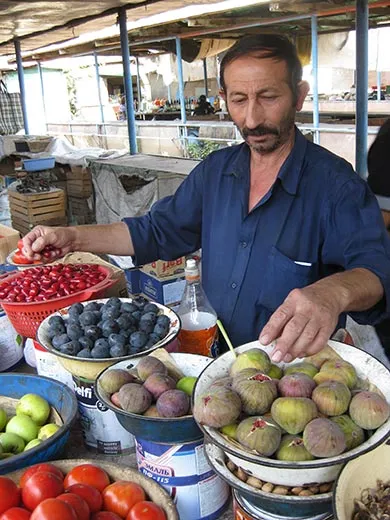
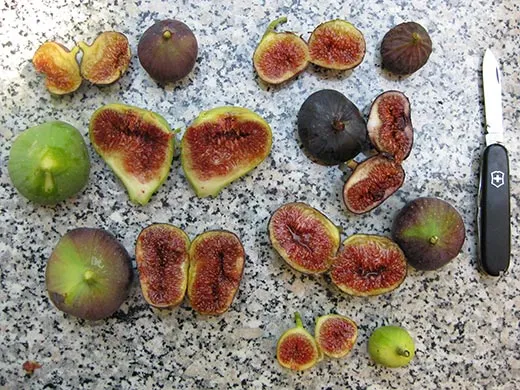
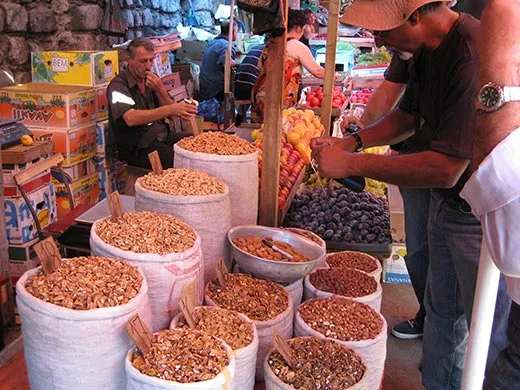
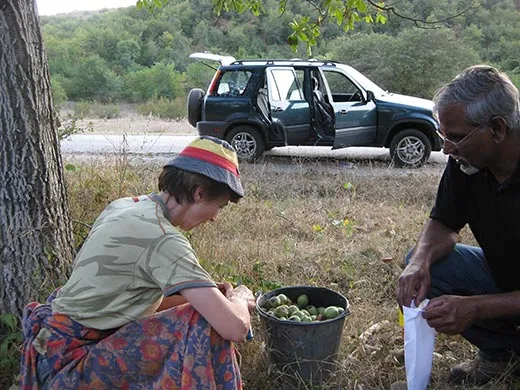
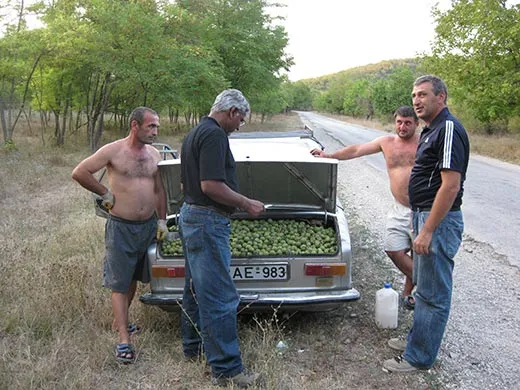
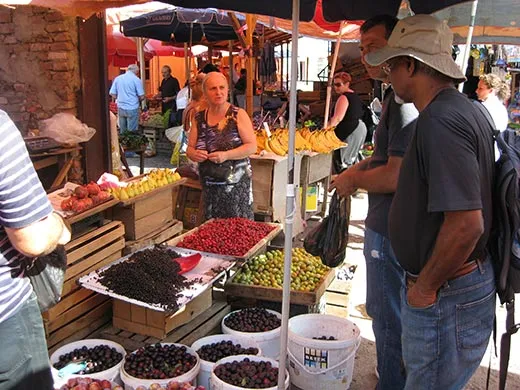
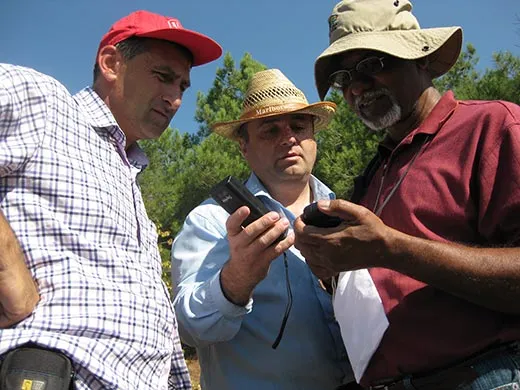
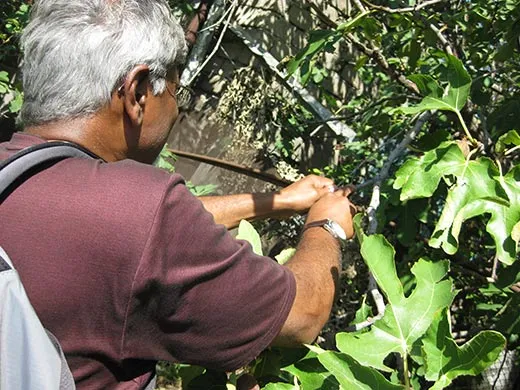
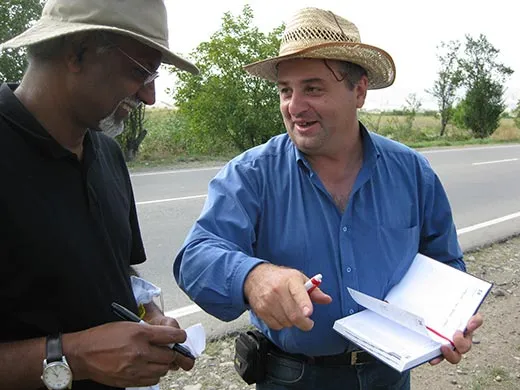
/https://tf-cmsv2-smithsonianmag-media.s3.amazonaws.com/accounts/headshot/Off-Road-alastair-bland-240.jpg)